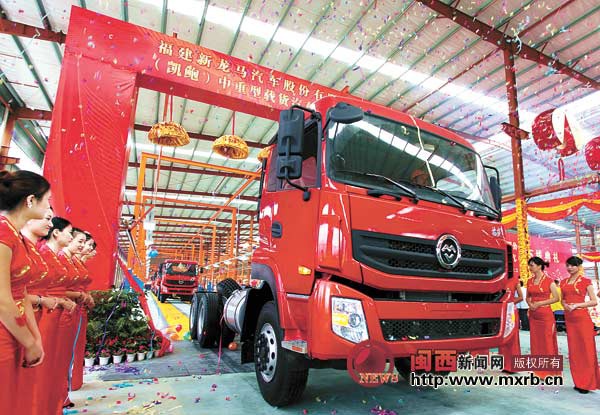With the new Mercedes-Benz Aerodynamics trailer, a long-haul tractor unit can save approximately 2000 litres of diesel annually, thereby saving its operator nearly 3000 euros in expenses. The second vehicle, the Mercedes-Benz Aerodynamics truck, is a rigid truck for long-distance haulage and short-radius distribution operations. It saves between 300 and 600 litres of diesel. The both vehicles will celebrate their world premiere at the International Motors Show for commercial vehicles (IAA). The real-world tests conducted by Mercedes-Benz on the road proved that a tractor/semitrailer combination with a gross weight of 40 tones consisting of a Mercedes-Benz Actros – currently offering the best aerodynamics in a series production truck – and the aerodynamically optimized Aerodynamics trailer can achieve fuel savings of 4.5 percent in long-haul usage.
The tractor unit, here the new Mercedes-Benz Actros with StreamSpace cab, remains unchanged. The new Actros is already aerodynamically optimised. It will merely be equipped with an air deflector on the roof, cab side deflectors and side trim panels between the axles. This aerodynamic package is already available ex factory for heavy-duty Mercedes-Benz trucks in long-haul transport. The designers and developers from Mercedes-Benz did not rely on unrealistic show effects when combining the new Actros with the Aerodynamics trailer: this vehicle combination is producible, upholds the framework of coming legal requirements and is absolutely realistic for everyday use under tough road transport conditions. Whether for ground clearance, approach/departure angle or ease of loading at the rear – the Aerodynamics trailer meets all the usual requirements of everyday haulage.
An aerodynamically optimized rigid truck in long-haul transport and short-radius distribution also relieves the burden on the wallet and the environment, as evidenced by the Mercedes-Benz Aerodynamics truck prototype. In this project the aerodynamic engineers and development engineers at Mercedes-Benz took ideas from the Aerodynamics trailer and applied them to the rigid truck, with vehicle-specific enhancements. Rigid vehicles can also achieve considerable potential savings: there is a large number of aerodynamically relevant applications even in short-radius distribution. Thus the new Mercedes-Benz Antos was used as the basis vehicle and then developed to offer the best aerodynamic figures possible. Added to this are typical long-haul applications such as furniture or flower transport. This is also true for toll-free rigid vehicles under the 12 t permissible gross weight rating. Compared with conventional box-type rigid vehicles, the Aerodynamics truck improves aerodynamics by approximately twelve percent. This means a consumption reduction of approximately three percent on trunk roads. In the case of an annual mileage of 50,000 kilometres, this results in a saving of around 350 l per year, equivalent to a saving of around 500 euros for the operator or just under one tonne of CO2 for the environment.
The basis of the Mercedes-Benz Aerodynamics truck is a two-axle platform truck chassis with 18 t permissible gross weight rating and the 2.3 m wide cab of the Actros ClassicSpace. A cab from the new Mercedes-Benz Antos is also available. The body is a conventional box with an outside length of 6.5 m, a width of 2.55 m and an inside height of 2.20 m. The outer skin is made of smooth Alucobond plates, which provide little resistance to the wind. In contrast to many aerodynamically unfavorable box bodies, the Aerodynamics truck has an edge radius of 80 mm at the transition of the side walls to the roof and an edge radius of 200 mm at the bulkhead. This ensures a streamlined airflow. The side trim panels are reminiscent of the Aerodynamics trailer. Their upper edge fits nearly flush with the box body.





















